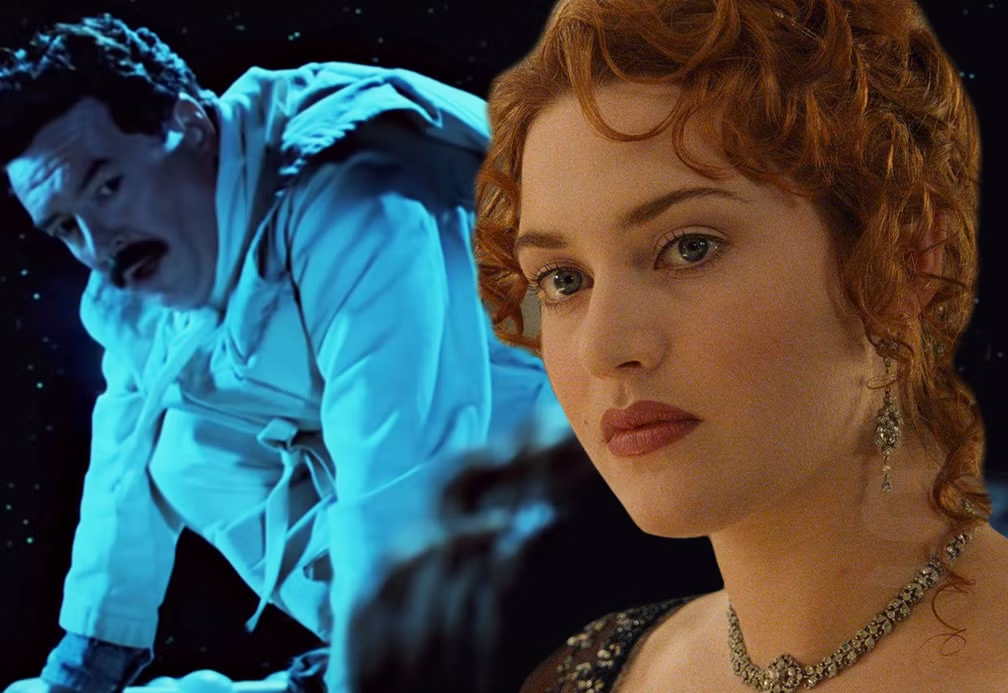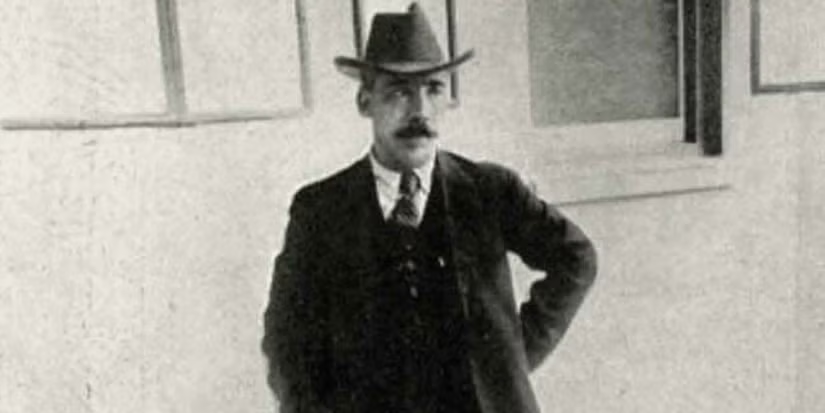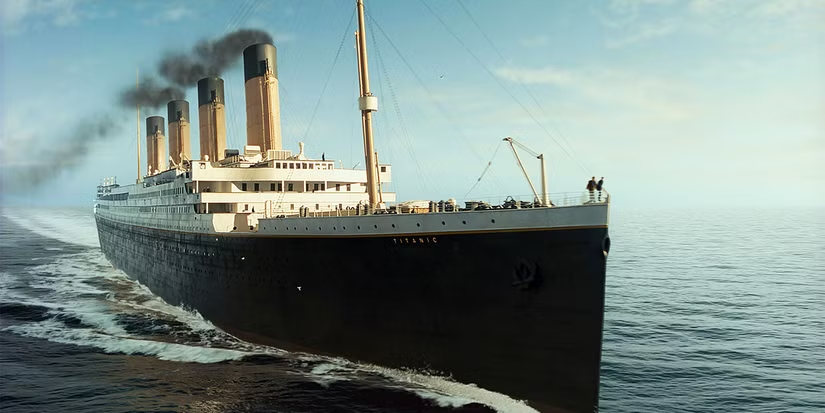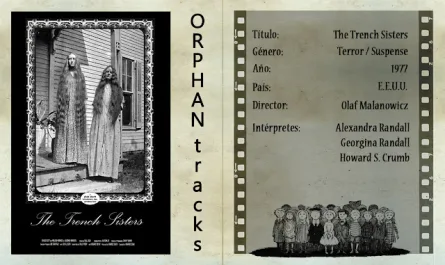Titanic focuses on the story of Jack Dawson and Rose DeWitt Bukater who were on board the infamous ship Titanic, and while their story is fictional, many real-life characters were included in the movie. Among those is the man Jack and Rose saw on the bow as the ship sank – and his story is a wild one. James Cameron’s career as a filmmaker has seen a bit of everything – from horror movies like his directorial debut Piranha II: The Spawning to sci-fi with The Terminator, and even action comedy with True Lies. But in 1997, all eyes were on him as he brought his most ambitious project at the time to the big screen: Titanic, a romance-disaster movie based on the accounts of the sinking of the RMS Titanic in 1912.

With the sinking of the ship as the turning point of the story, Titanic follows Rose DeWitt Bukater (Kate Winslet) and Jack Dawson (Leonardo DiCaprio), two passengers from different social classes who fall in love aboard the Titanic during its ill-fated maiden voyage. Titanic was a critical and commercial success, becoming the highest-grossing movie ever at the time (surpassed years later by Cameron’s Avatar and then by Marvel’s Avengers: Endgame), and was praised for its visuals and performances, though the love story of Jack and Rose wasn’t that well-received.
While Jack and Rose were entirely fictional (though there was a real-life woman who served as inspiration for the older version of Rose), Cameron included some real-life characters in Titanic, most notably Molly Brown (played by Kathy Bates), but there’s one who has a fascinating and bizarre story and was only onscreen for a couple of seconds. That man on the Titanic’s bow was the drunk baker Jack and Rose saw as the ship was sinking, and here’s his story.
The Real-Life Drunk Man Jack & Rose Saw On The Bow Of The Titanic

The man on the Titanic’s bow that Jack and Rose saw while doing their best to survive the sinking was Charles Joughin, an English-American chef and the chief baker aboard the Titanic. He was born in 1878 and first went to sea at the age of 11. Years later he became chief baker on various White Star Line steamships, including the Titanic’s sister ship, Olympic. According to his testimony, Joughin was off-duty and in his bunk when the Titanic hit the iceberg, and after hearing that officers were getting the lifeboats ready for launching, he sent his men up to the boat deck with provisions for those in the lifeboats. Joughin was played by Liam Tuohy in Titanic, and just like his real-life counterpart, he was the chief baker for the Titanic, but his appearance is so brief viewers are left without knowing who the man getting drunk as the ship sank really was. In the film, Joughin, like Jack and Rose, is clinging to the back of the ship, smartly moving to that location as the ship begins its descent into the Atlantic Ocean. While it isn’t clear who he is, it’s obvious he’s just as traumatized as Jack, Rose, and the rest of Titanic’s passengers. The look of devastation and resignation he gives to Rose is poignant despite not knowing his identity as a baker, though his all-white garb gives it away in hindsight.
Was The Man On The Titanic’s Bow Really Drunk?

The baker in Titanic stood out for doing two things at the same time in the middle of a tragedy: holding on for dear life and drinking. This part of his portrayal in the movie was based on his testimony, as he was, in fact, drunk when the ship was sinking. Before resorting to getting drunk, Joughin joined Chief Officer Henry Wilde by Lifeboat 10 and helped ladies and children get to the lifeboats (and, after a while, he reportedly threw women and children into the lifeboats as they claimed they were safer aboard). He was assigned as captain of Titanic’s Lifeboat 10 but decided not to board. And when the lifeboat left, he went to his quarters to “have a drop of liqueur”, which he later confessed was a tumbler half-full of liqueur.
How Charles Joughin Survived The Titanic Sinking

Charles Joughin’s testimony of how he survived the sinking of the Titanic pretty much matches what the movie showed. When the ship split into two parts, he ran toward the poop deck. Once there, he climbed to the starboard side of it and got hold of the safety rail so that he was atop the ship’s railing as it went down, just like he, Jack, and Rose did in the movie. As the ship sank, he “rode it down as if it were an elevator”, making sure that his head wouldn’t get under the water. This made him not only Titanic’s notorious man on the bow, but also the last survivor to leave the Titanic, and once in the water, he clutched to debris and paddled and trod water for about two hours. Many hours later, when daylight broke, he was found by Collapsible B, led by Second Officer Charles Lightoller. However, there was no room for him in the boat. Luckily, cook Isaac Maynard was on board and held his hand as Joughin held onto the side of the boat, with his legs and feet still in the water. When another lifeboat appeared, Joughin was finally rescued and later boarded the Carpathia with other survivors.
Surprisingly, he didn’t have much physical damage after spending so much time in the freezing water of the ocean, and only had swollen feet when he was rescued. Whether the amount of alcohol he drank helped him survive in the freezing water or not continues to be debated, as large amounts of alcohol generally increase the risk of hypothermia. But it’s very possible that what alcohol did for him was give him a lot of courage in the face of fear, danger, and near death. He later admitted to hardly feeling the cold, which was impressive considering how long he was wading in the water before being rescued.
What Happened To Titanic’s Man On The Bow After The Movie’s Events?

Charles Joughin returned to England following the ship’s sinking tragedy and was one of many who testified at the British Wreck Commissioner’s Inquiry, which was done on behalf of the British Board of Trade, and was set up to investigate exactly what happened to the Titanic that night, the extent of the damage, and how many people died. Joughin later moved to the US, where he continued working as a baker, serving on ships operated by the American Export Lines and on World War II troop transports before retiring in 1944. The Titanic wasn’t his first and only tragedy at sea, which explains why he continued working on ships rather than fearing them after Titanic’s sinking. According to his obituary, he was aboard the SS Oregon, which sank in 1886, though all passengers were rescued before it went under the water. Joughin died in 1956 at the age of 78 after health complications. The story of the Titanic’s chief baker has made its way to pop culture, appearing not only in James Cameron’s movie but also in the 1955 movie A Night To Remember and an episode of Drunk History, and will continue to fascinate those who come across his bizarre and unbelievable story of survival.





